Country analysis (Algeria- DZA)
In October, at the beginning of this reporting period potato production in the regions of Mostaganem, El Oued, Ain defla and Relizane had started, whereas the production in the Mostagnem region (located in the western part of the country) started in January. The establishment of the cereal crops suffered from a serious precipitation deficit. Based on the crop condition development graph, NDVI values were similar to those of 2021-2022 in October to November, lower than those of 2021-2022 in December and slightly below those of 2021-2022 in late January. The NDVI remained far below average throughout the monitoring period. Crop conditions can be assessed as poor due to severe drought conditions.
Compared to the average of the last 15 years, rainfall was significantly lower by 55% while both radiation and temperature were above average (RADPAR +9%, TEMP +1.4°C). The estimated biomass for the country was 33% below the 15YA. The cropped arable land fraction (CALF) was below average by 24% and the national average VCIx was 0.53.
The NDVI departure cluster profiles indicate that: (1) 47.2% of arable land experienced below-average crop conditions, scattered around the central region of the country, the high plateaus, some areas in the sub-Sahara, and the western region. (2) 25.3% of arable land has slightly above-average crop conditions, scattered around the highlands and eastern country. (3) 14.8% of arable land, mainly in the western part of the country and some central regions, had below-average crop conditions before a marked dropdown from November to late January. (4) 12.7% of arable land experienced below-average crop conditions from October to late November before a marked drop in late November, mainly in eastern countries and slightly marked by an increase from December, indicating below-average crop conditions. Dry conditions in October and November may have delayed the establishment of cereal crops and the crop production index (CPI) was 0.77 according to the CPI time series from 2013 to 2023. Crop conditions were unfavorable due to below-average precipitation. However, the heavy rains in January may not help alleviate the production conditions for cereal crops. Indeed, supplemental irrigation is a practical way for farmers to salvage this crop

Figure.1 Phenology map
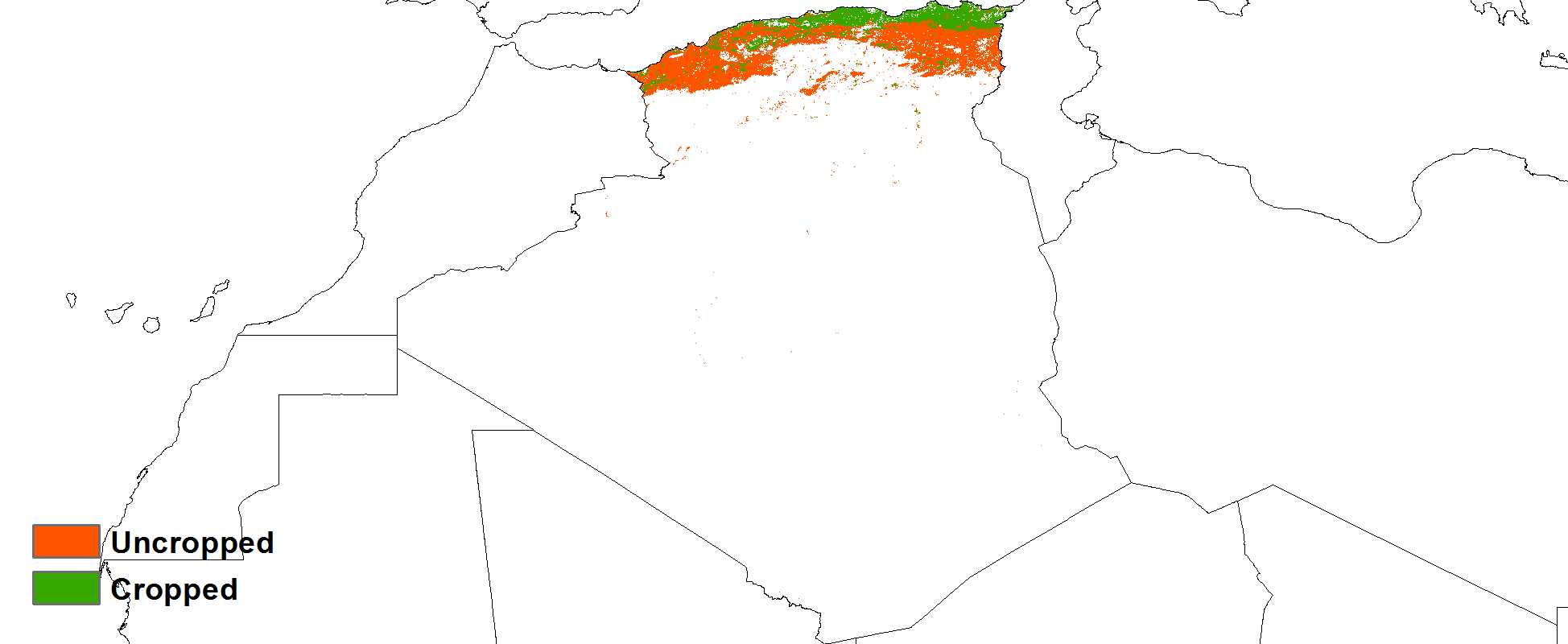
Figure.2 Cropped arable land classification (CALF)
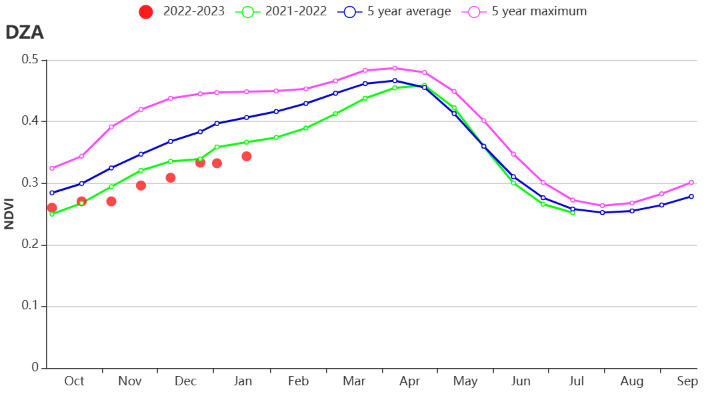
Figure.3 NDVI profile
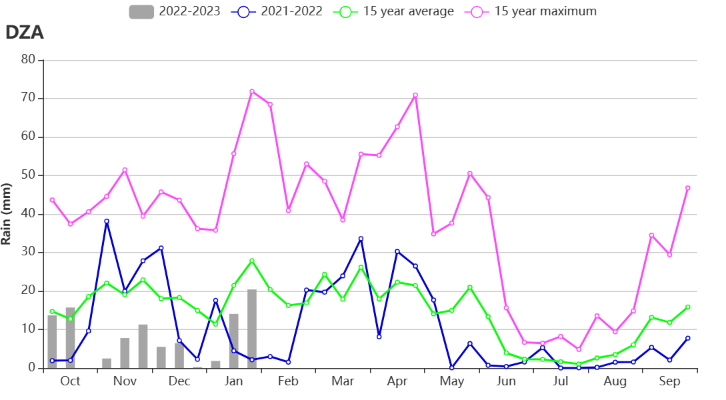
Figure.4 Rainfall profile
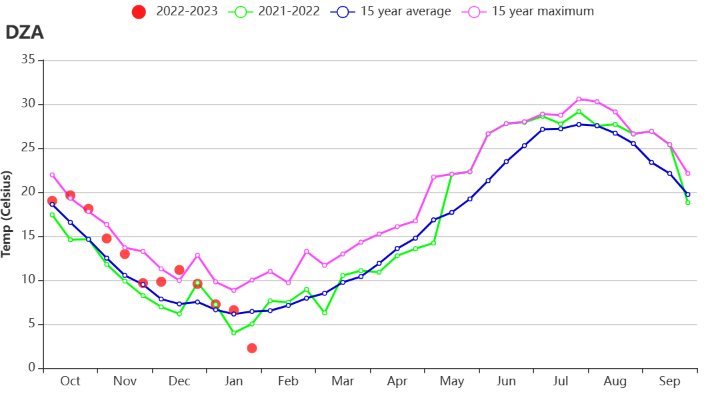
Figure.5 Temperature profile
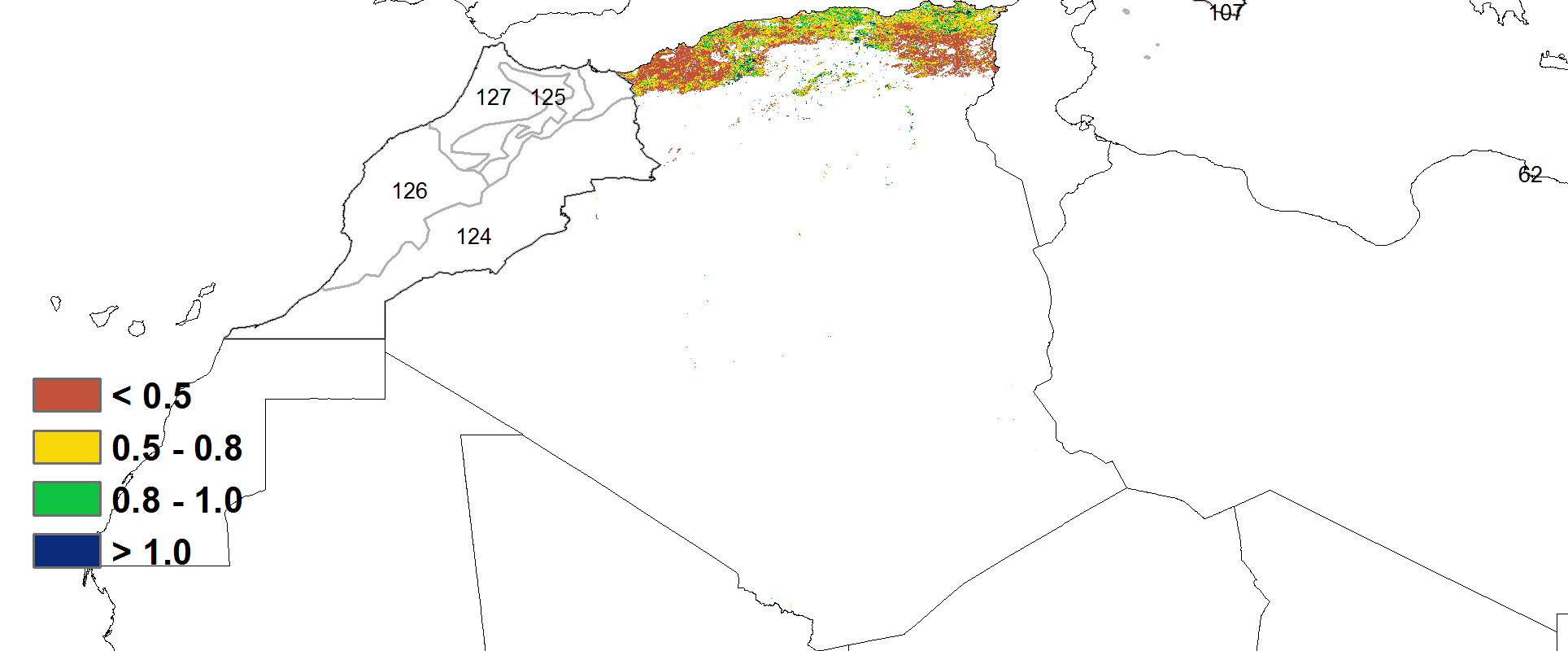
Figure.6 VCIx
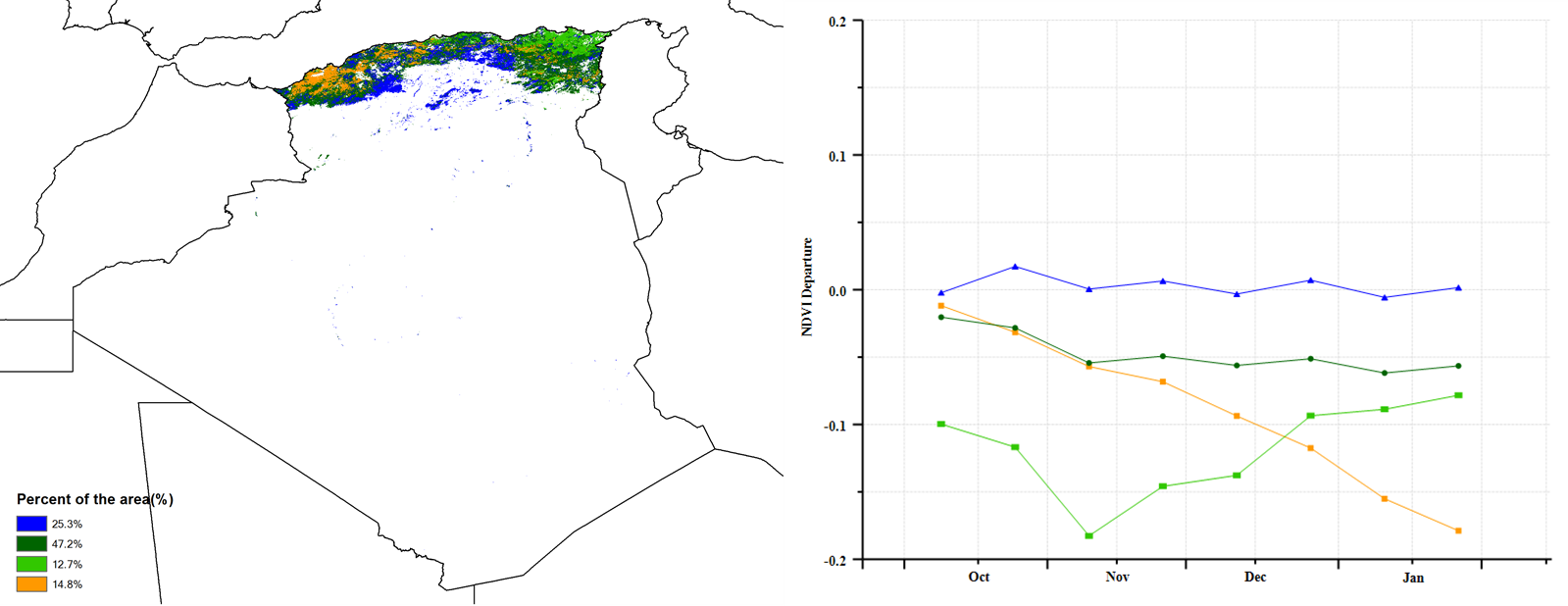
Figure.7 NDVI departure clustering
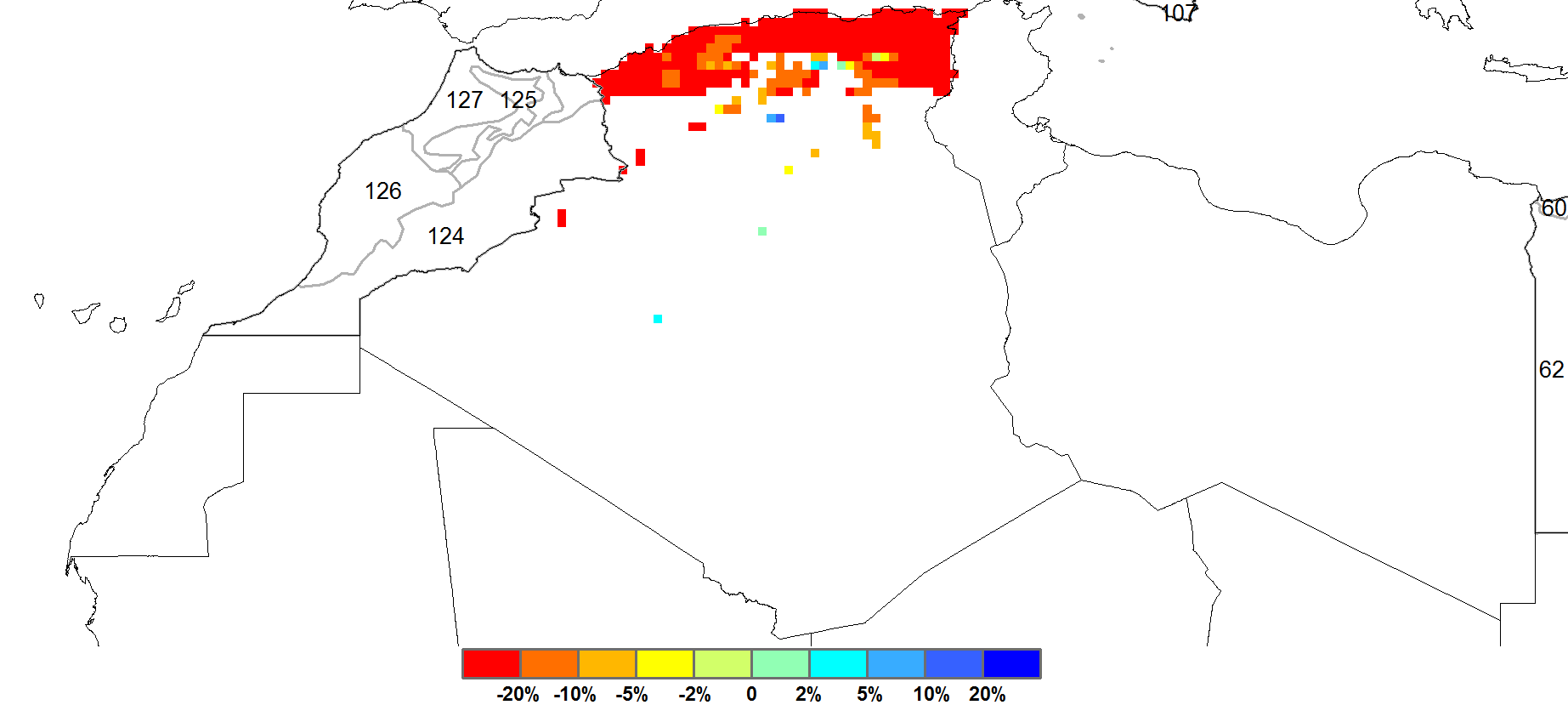
Figure.8 Biomass departure
Table 1 Algeria's agroclimatic indicators, current season's values, and departure from 15YA, October 2022 - January 2023
Region | RAIN | TEMP | RADPAR | BIOMASS | ||||
Algeria | Current (mm) | Departure from 15YA (%) | Current (°C) | Departure from 15YA (°C) | Current (MJ/m2) | Departure from 15YA (%) | Current (gDM/m2) | Departure from 15YA (%) |
99 | -55 | 11.7 | 1.4 | 717 | 9 | 326 | -33 | |
Table 2 Algeria's agroclimatic indicators, current season's values, and departure from 15YA, October 2022 – January 2023
Region | CALF | Maximum VCI Intensity | Crop Production Index (CPI) | |
Algeria | Current (%) | Departure from 5YA (%) | Current (°C) | Departure from 15YA (%)
|
29 | -24 | 0.53 | 0.77 | |
